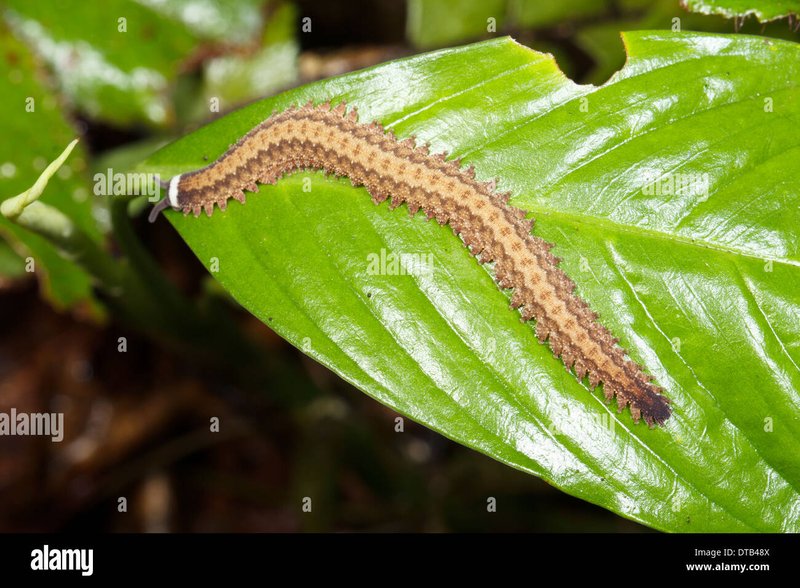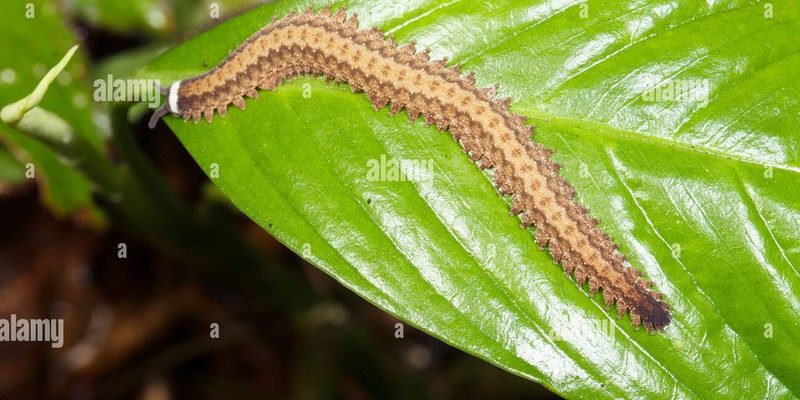
You might be wondering why velvet worms deserve our attention. These ancient invertebrates, also known as onychophorans, have been around for hundreds of millions of years. They’re slippery little hunters themselves, equipped with sticky slime that helps them catch prey. However, despite their predatory skills, they aren’t at the top of the food chain. Understanding their natural predators helps us appreciate the complex web of life that thrives in rainforests, underscoring how ecosystems depend on every level of life, from the tiniest microbe to the largest mammal.
The Velvet Worm: A Quick Overview
Before we dive deeper into their predators, let’s paint a clearer picture of what velvet worms are. Think of them as tiny, soft-bodied creatures that resemble a mix between a caterpillar and a slug. They typically measure just a few inches long and have segments like an earthworm. Their velvety appearance gives them their name, and surprisingly, they’re more closely related to arthropods (like insects and spiders) than to worms.
Velvet worms inhabit humid, leaf-littered areas in tropical and subtropical forests. They thrive in the shadows where it’s cool and moist, making the rainforest their perfect home. With a pair of antennae and several pairs of legs, these creatures navigate their environment with ease, hunting down insects and other small invertebrates. Their method of hunting is rather fascinating—they secrete a mucus-like slime to ensnare prey, which they then consume.
Despite being skilled hunters, velvet worms are not immune to threats. They have their own set of predators waiting in the shadows, ready to make a meal out of them.
Birds: The High-Flying Predators
Birds are among the most notorious predators of velvet worms, swooping down from the treetops to snatch them up with their beaks. Various bird species in rainforest ecosystems, from tiny flycatchers to larger species like thrushes, have developed a taste for these soft-bodied creatures.
Here’s the thing: birds are agile hunters, and their keen eyesight allows them to spot velvet worms hiding among the foliage or under leaf litter. Certain birds are even known to use tools—like sticks—to probe for hidden velvet worms. It’s a reminder that the jungle is always a battleground, with birds capitalizing on any opportunity to grab a snack.
Interestingly, some birds have developed specific behaviors to target velvet worms. For instance, they might wait patiently for a velvet worm to emerge from its hiding spot or listen for the faint rustling sounds that give away the worm’s location. This combination of strategy and skill makes birds top contenders in the hunt for velvet worms.
Reptiles: Cold-Blooded Hunters
Reptiles, such as lizards and snakes, also play a significant role in the predation of velvet worms. Many lizards, with their quick movements and excellent camouflage, can stealthily approach their prey. They’re particularly well-adapted for hunting in the damp, leaf-covered ground where velvet worms reside.
Let me explain a bit more about how reptiles target these elusive creatures. Many lizards have evolved to have a diet that includes various invertebrates, making velvet worms a perfect snack. For instance, some species of geckos will scavenge on the forest floor, searching for any unsuspecting velvet worm that may have ventured out into the open.
Snakes, on the other hand, may be less common predators of velvet worms, but they do pose a threat. Some smaller, ground-dwelling snakes will hunt invertebrates, including velvet worms, as part of their diet. Their method of hunting often involves ambush, lying in wait to spring on any unsuspecting prey.
Frogs: The Silent Stalkers
Frogs might not be the first predators that come to mind when thinking of threats to velvet worms, but in the rainforest, they certainly are. Many frog species have a diet primarily composed of insects and other small invertebrates, which can include our slippery friends.
Frogs use their long, sticky tongues to catch prey. Here’s a little story for you: Picture a brightly colored poison dart frog crouched on a leaf. As a velvet worm inches closer, the frog’s tongue shoots out, snaring the worm before it even knows what hit it. It’s a classic example of nature’s “eat or be eaten” dynamic.
Additionally, frogs are often found lurking around the same damp environments where velvet worms thrive. Their ability to blend in with foliage allows them to be stealthy hunters, waiting for the perfect moment to strike.
Insects: The Tiny Assassins
Believe it or not, several insects prey on velvet worms, too. Ants, spiders, and some predatory beetles are just a few examples of this group. Ants, especially, can be formidable foes. Some species have evolved to hunt in groups, employing strategies that allow them to overpower larger prey.
Imagine a small velvet worm wandering through the underbrush when a scouting ant spots it. With a quick signal, the ant calls its friends over. Soon, a swarm of tiny attackers surrounds the lone worm, leaving it little chance to escape. It’s a classic example of teamwork in nature.
Similarly, certain spiders known for their stealth and speed might also take advantage of an unsuspecting velvet worm. Whether it’s the quick strike of a jumping spider or the patient wait of a web-weaving spider, insects can be deadly predators in the rainforest ecosystem.
The Importance of Predator-Prey Relationships
Understanding the natural predators of velvet worms is crucial for appreciating the delicate balance of rainforest ecosystems. Each predator plays a role in controlling velvet worm populations, which in turn affects the entire food web. When predators are removed or their populations decline, it can lead to an overabundance of prey species, disrupting the harmony of the environment.
Here’s the thing: these predator-prey interactions are part of a larger narrative about survival in nature. Velvet worms, with their unique hunting methods and adaptations, contribute to the biodiversity of their ecosystem, while their predators ensure that the cycle of life continues.
In this way, every creature has its part to play, underscoring how interconnected we all are. Understanding these relationships helps reinforce the need for conservation efforts, ensuring that rainforests and their vibrant ecosystems remain protected for future generations.
As we wrap up our exploration of the natural predators of velvet worms, it’s clear that life in the rainforest is a complex tapestry of interactions. From birds and reptiles to frogs and insects, these predators ensure that velvet worms—along with countless other species—are kept in check, promoting biodiversity and stability within their environment.
So, the next time you hear about velvet worms, remember that they are not just quirky little creatures living in the shadows. They are an integral part of a larger story, full of twists and turns—much like the rainforest itself. By understanding their predators, we appreciate the delicate dance of survival that plays out daily in the wild. Nature, in all its chaos and beauty, continues to thrive, reminding us of the importance of every layer of life on this planet.

